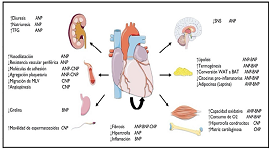
Asia Pacific Academy of Science Pte. Ltd. (APACSCI) specializes in international journal publishing. APACSCI adopts the open access publishing model and provides an important communication bridge for academic groups whose interest fields include engineering, technology, medicine, computer, mathematics, agriculture and forestry, and environment.

Outcomes in acute decompensated chronic heart failure patients discharged with and without ivabradine: Advantages beyond heart rate control
Vol 5, Issue 1, 2024
Download PDF
Abstract
Background and Aim: Ivabradine is indicated in chronic heart failure (HF) and reduced ejection fraction (EF) of < 35% and resting heart rate (HR) of > 70 bpm. However, role of Ivabradine in acute decompensated chronic HF (ADCHF) is not well known. The aim of this study was to evaluate one-year outcomes of ADCHF patients discharged with and without Ivabradine. Materials and Methods: This is a prospective observational cohort study of ADCHF patients from January 2016 to January 2018. Main exclusion criteria was new onset de-novo acute HF, those with EF > 50% and atrial fibrillation. Data were analysed from 130 patients who were discharged with (62 patients) or without Ivabradine (68 patients). The primary end points were one-year re-hospitalization and cardiovascular mortality between two groups. Results: The mean age of patients were 56 ± 15 years and 61 ± 17 years between Ivabradine and Non-ivabradine groups. EF upon discharge was 37.48% ± 5.34% vs 40.01% ± 8. 12%, with p-value of 0.036. At discharge, higher HR was noted in patients with Ivabradine 84 ± 13 bpm compared to 77.84 ± 12. 13 bpm in patients without Ivabradine (p-value = 0.006). After a year, HR in Ivabradine group was low compared to non-Ivabradine group, but was not statistically significant, 66.15 ± 8 vs. 69.29 ± 11.3 bpm, respectively. In the Ivabradine group 27.4% of patients visited emergency room (ER) more than once compared to 60.2 % without Ivabradine (p-value = 0.0001). 9.7% of patients in Ivabradine group required one readmission compared to 55.9% without Ivabradine (p-value = 0.0001). Conclusions: In ADCHF patients there was significant reduction in ER room visit and re-admission rate in patients discharged with Ivabradine. Hence Ivabradine therapy may be considered in patients with ADCHF with EF < 50% and HR > 70 bpm to prevent re-hospitalization and save hospitalization costs.
Keywords
References
- Sulaiman K, Panduranga P, Al-Zakwani I, et al. Rationale, design, methodology and hospital characteristics of the first gulf acute heart failure registry (gulf care). Heart Views. 2014; 15(1): 6. doi: 10.4103/1995-705x.132137
- Sulaiman K, Panduranga P, Al‐Zakwani I, et al. Clinical characteristics, management, and outcomes of acute heart failure patients: observations from the Gulf acute heart failure registry (Gulf CARE). European Journal of Heart Failure. 2015; 17(4): 374-384. doi: 10.1002/ejhf.245
- Panduranga P, Sulaiman K, Al-Zakwani I, et al. Demographics, Clinical Characteristics, Management, and Outcomes of Acute Heart Failure Patients: Observations from the Oman Acute Heart Failure Registry. Oman Medical Journal. 2016; 31(3): 188-195. doi: 10.5001/omj.2016.37
- Yancy CW, Jessup M, Bozkurt B, et al. 2017 ACC/AHA/HFSA Focused Update of the 2013 ACCF/AHA Guideline for the Management of Heart Failure: A Report of the American College of Cardiology/American Heart Association Task Force on Clinical Practice Guidelines and the Heart Failure Society of America. Circulation. 2017; 136(6). doi: 10.1161/cir.0000000000000509
- Ponikowski P, Voors AA, Anker SD, et al. 2016 ESC Guidelines for the diagnosis and treatment of acute and chronic heart failure. European Journal of Heart Failure. 2016; 18(8): 891-975. doi: 10.1002/ejhf.592
- Swedberg K, Komajda M, Böhm M, et al. SHIFT Investigators. Ivabradine and outcomes in chronic heart failure (SHIFT): a randomised placebo- controlled study. Lancet. 2010; 376(9744): 875-85. doi: 10.1016/S0140-6736(10)61198-1
- Borer JS, Böhm M, Ford I, et al. Efficacy and Safety of Ivabradine in Patients With Severe Chronic Systolic Heart Failure (from the SHIFT Study). The American Journal of Cardiology. 2014; 113(3): 497-503. doi: 10.1016/j.amjcard.2013.10.033
- Komajda M, Tavazzi L, Swedberg K, et al. Chronic exposure to ivabradine reduces readmissions in the vulnerable phase after hospitalization for worsening systolic heart failure: a post‐hoc analysis of SHIFT. European Journal of Heart Failure. 2016; 18(9): 1182-1189. doi: 10.1002/ejhf.582
- Hidalgo FJ, Anguita M, Castillo JC, et al. Effect of early treatment with ivabradine combined with beta-blockers versus beta-blockers alone in patients hospitalised with heart failure and reduced left ventricular ejection fraction (ETHIC-AHF): A randomised study. International Journal of Cardiology. 2016; 217: 7-11. doi: 10.1016/j.ijcard.2016.04.136
- Tardif JC, O’Meara E, Komajda M, et al. Effects of selective heart rate reduction with ivabradine on left ventricular remodelling and function: results from the SHIFT echocardiography substudy. European Heart Journal. 2011; 32(20): 2507-2515. doi: 10.1093/eurheartj/ehr311
- Hu DY, Huang DJ, Yuan ZY, et al. Efficacy and safety analysis of ivabradine hydrochloride treatment of Chinese patients with chronic heart failure: subgroup analysis of Chinese patients in the SHIFT study. Chinese Journal of Cardiology. 2017; 45:190-197.
- Fox K, Komajda M, Ford I, et al. Effect of ivabradine in patients with left-ventricular systolic dysfunction: a pooled analysis of individual patient data from the BEAUTIFUL and SHIFT trials. European Heart Journal. 2013; 34(29): 2263-2270. doi: 10.1093/eurheartj/eht101
- Borer JS, Böhm M, Ford I, et al. Efficacy and Safety of Ivabradine in Patients With Severe Chronic Systolic Heart Failure (from the SHIFT Study). The American Journal of Cardiology. 2014; 113(3): 497-503. doi: 10.1016/j.amjcard.2013.10.033
- Zugck C, Störk S, Stöckl G. Long-term treatment with ivabradine over 12 months in patients with chronic heart failure in clinical practice: Effect on symptoms, quality of life and hospitalizations. International Journal of Cardiology. 2017; 240: 258-264. doi: 10.1016/j.ijcard.2017.03.131
- Su Y, Ma T, Wang Z, et al. Efficacy of early initiation of ivabradine treatment in patients with acute heart failure: rationale and design of SHIFT‐AHF trial. ESC Heart Failure. 2020; 7(6): 4465-4471. doi: 10.1002/ehf2.12997
Supporting Agencies
Copyright (c) 2024 Prashanth Panduranga, Abdulnasser Al Adawi, Issa Al-Salmi
License URL: https://creativecommons.org/licenses/by/4.0/

This site is licensed under a Creative Commons Attribution 4.0 International License (CC BY 4.0).

Prof. Prakash Deedwania
University of California,
San Francisco, United States




